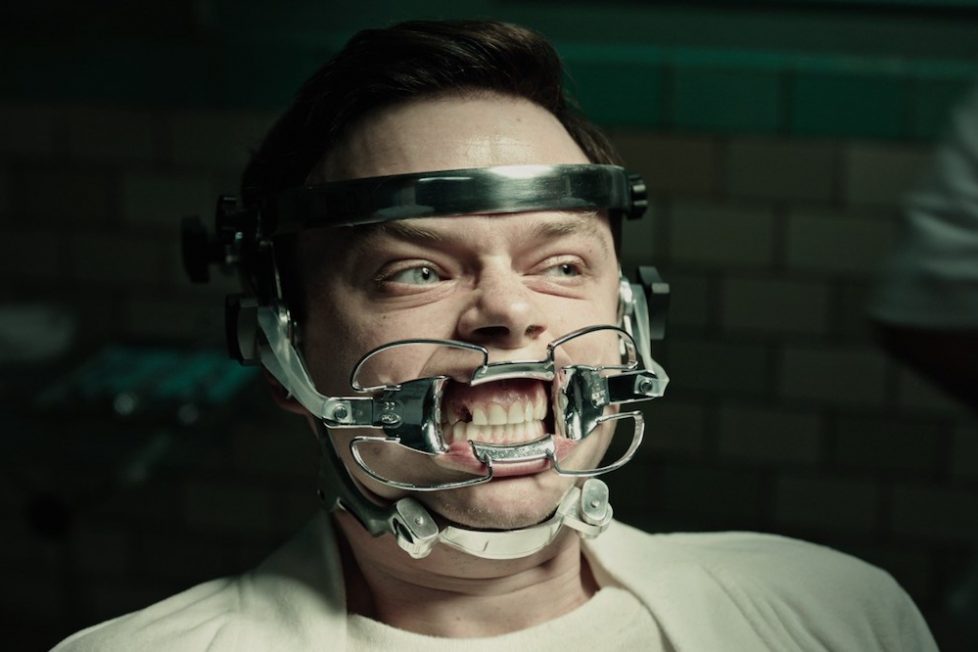A CURE FOR WELLNESS (2016)
A young executive is sent to retrieve his company's CEO from a mysterious "wellness centre" in the Swiss Alps, but comes to suspect the spa's treatments aren't what they seem...

A young executive is sent to retrieve his company's CEO from a mysterious "wellness centre" in the Swiss Alps, but comes to suspect the spa's treatments aren't what they seem...


According to its Wikipedia page, Gore Verbinski’s latest is a “science fiction psychological horror thriller film”. If that sounds like someone just threw a bunch of genres together willy-nilly, well… yes, pretty much. That’s not to say it’s an inaccurate description, but that it serves to indicate A Cure for Wellness is a bit of a mess.
The story follows Dane DeHaan’s slick and obnoxious business executive Lockhart as he’s sent to a retrieve his company’s errant CEO from a remote “wellness spa” he’s taken up residence in after an apparent psychological break. The sanatorium, nestled in the gorgeous Swiss Alps, boasts its own miracle cure derived from the unique waters that flow from its own private aquifer.
Arriving at the lavish facility, Lockhart soon finds himself stranded and increasingly suspicious of the alleged ‘cure’ the ageing and affluent guests seem to swear by. Is there more to Jason Isaacs’ reasonable Dr. Volmer than it seems? Where exactly is the missing CEO? And just what is Lockhart to make of the strange, ethereal girl who wanders the grounds like a ghost?
One of the principal issues with A Cure for Wellness (and there are many) is that the plot is extremely by-the-numbers. The script isn’t subtle, and all the elements of the story are presented early doors, often with all the subtlety of a cut scene from a Resident Evil video game. But rather than teasing out what’s to come, these hints give the game away within the opening half-hour or so. There are no red herrings, and there’s no misdirection. Everything you’re told to wonder about and everything you’re naturally suspicious of comes into play in exactly the way you thought it would. The screenplay deals you a handful of cards, then tells you their colours, suits and numbers, until the only thing left of interest is to see what order they’re played in.
You’re just waiting for the plot to unravel, rather than being invested in how or why it does.
And even that process takes much too long, with the movie’s bloated run-time feeling half-an-hour longer than it needed to be. And that’s with the inclusion of some odd shortcuts in time and continuity. How, for instance, does one character go from being explicitly held prisoner to appearing in the back of someone’s car, apparently escaped, without the connective tissue of a scene in between? If Verbinski wanted to take a shortcut, there were plenty of other opportunities. Similarly, the fractured chronology of the film’s opening act seems unnecessary, particularly given the gimmick’s dropped entirely for the rest of the picture.
And yet, despite all that, A Cure for Wellness does have elements to recommend it. Verbinski’s movie is a melting pot of cinematic influences, which can’t help but render it at least mildly diverting for cineastes. Martin Scorsese’s Shutter Island seems to have been a huge and obvious inspiration, there are also dues paid to the operatic horror of Dario Argento, along with shades of Stanley Kubrick and Guillermo Del Toro’s work, amongst others.
The anti-capitalist themes, while not fully developed, are at least resonant, and there’s no doubt Verbinski has crafted an extremely handsome film. It’s downright beautiful at times. The filmmaker and his cinematographer Bojan Bazelli make particularly good use of reflections, be they from the glass and chrome jungle that Lockhart leaves behind, or as a result of the increasingly sinister presence of the Spa’s all-pervading water. The music, by Benhamin Wallfish, is also very effective, with one eerie song by Mia Goth’s Hannah working brilliantly as part of the overall score, merging suspense with music-box motifs.
The beautiful cinematography is no doubt aided by the location’s breathtaking scenery, and the strange and ubiquitous presence of eels throughout the film gives A Cure for Wellness a fresh, unique, and uncomfortable selling point. The eels are used to skin-crawling effect, and there’s a lot of strikingly macabre imagery on display, including a few moments that are genuinely distressing to watch — not least of all an excruciating scene of dental torture that would make the Marathon Man blush. It’s about time a horror movie highlighted the alien creepiness of the humble eel; you’ll be shivering at the thought of them for days to follow.
As for the humans, DeHaan is fine in the lead, although his character never quite grows beyond being a two-dimensional arrogant businessman. As such, it’s left to Goth, as the sanatorium’s dreamy, childlike Hannah, to give the audience someone to really invest in. The actress is perfectly cast; her striking features lending her character a suitably otherworldly vibe. And while Isaacs’ accented villain is quietly effective for the most part, the final act gets very, very silly, and his transformation into pure Hammer Horror cartoon is difficult to take seriously. (And there’s at least one moment of villainy that crosses the line of decency in rather embarrassing fashion.)
Playing like Shutter Island meets Crimson Peak (but without the conviction of either), A Cure for Wellness is worth a look if you like any of the numerous genres it falls under, but it’s not a classic of any of them. There are some thrills, some beautiful cinematography, and certainly a few striking and memorable moments of horror that’ll linger in the mind, but as a movie it never wholly convinces.
director: Gore Verbinski.
writer: Justin Haythe (story by Justin Haythe & Gore Verbinski).
starring: Dane DeHaan, Jason Isaacs & Mia Goth.
